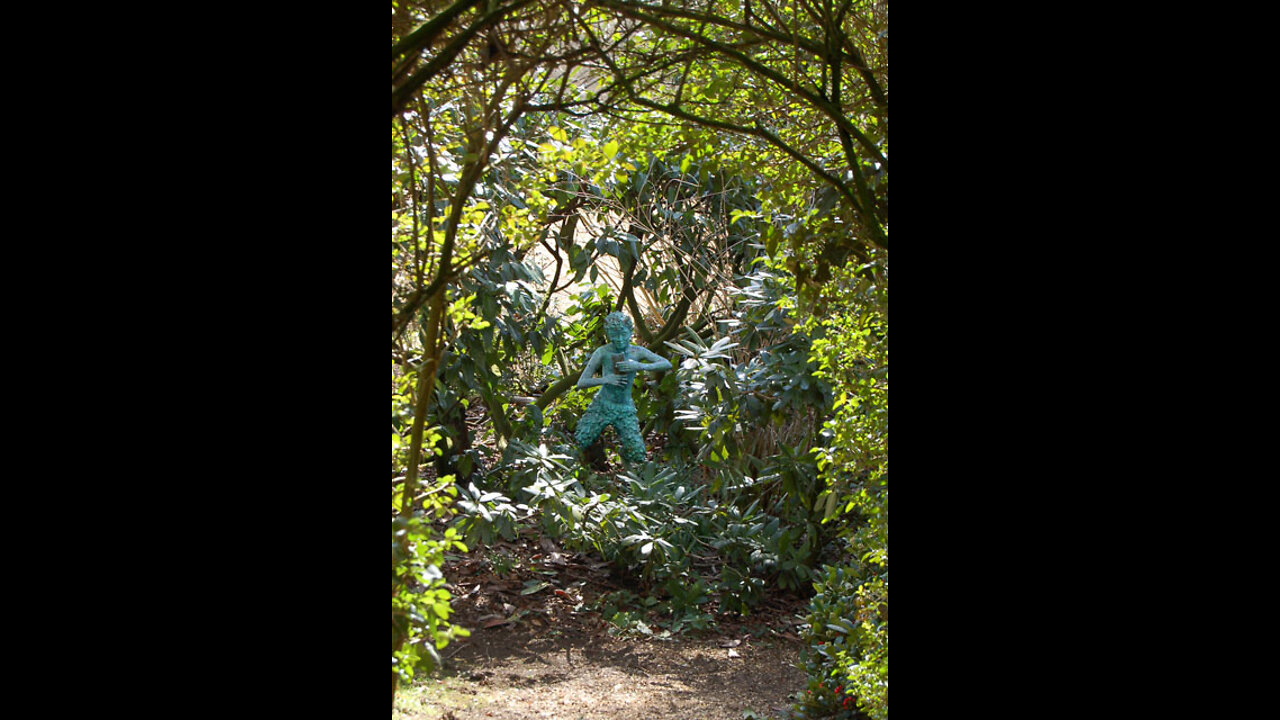Premium Only Content

"The White People", by Arthur Machen
You can support me on Patreon! https://www.patreon.com/sststr
One of Machen's most classic tales, along with "The Great God Pan". Written in the 1890s and first published in 1904. Personally I could do without the framing provided in the Prologue or Epilogue - The Green Book is quite excellent all on its own!
----
0:00:00 Prologue
0:20:55 The Green Book
1:35:08 Epilogue
----
From the annotations:
ecstasy: a key Machen term; his theory of literature, for instance, as articulated in his book "Hieroglyphics", is centered upon the concept
forsake the imperfect copies and go to the perfect originals: a quintessentially Platonic formulation
Romanée-Conti: a highly esteemed vineyard in Burgundy
four ale: cheap ale, originally sold at fourpence a quart
qua: 'as being'; in other words, insofar as the killer merely kills, he does not qualify as a 'sinner' in Ambrose's spiritual sense, since a soulless animal may do as much
Highland caterans of the 17th century ... moss-troopers: both terms refer to gangs of Scots marauders
Gilles de Raiz: the Baron de Retz, Rais or Raiz (1404-40) fought the English alongside Joan of Arc during the Hundred Years War and was made marshal of France, but achieved historical immortality for the ritualized torture, rape, and murder of children.
the "Blackwood" review of Keats: both the Quarterly Review and Blackwood's Magazine reviewed Keat's "Endymion" (1818) with great harshness
Hierarchs of Tophet: Tophet or Topheth is a place near Jerusalem associated in the Bible with child sacrifice; in extended uses, hell itself. A 'hierarch' is a high priest
flagrant "Hobson-Jobson": originally a British corruption of the Arabic "Ya Hasan! Ya Husayn!", the phrase can refer, as here, to the linguistic phenomenon ... of superficial linguistic resemblance
De Maupassant's tale: "Qui sait" ("who knows") by Guy de Maupassant, first published in 1890 in the newspaper L'Echo de Paris
the Aklo letters ... or what voolas mean: an incantatory litany of inventions, singled out for mention by Lovecraft, who wrote admiringly in his influential essay on supernatural horror
for ever and for ever, world without end, Amen: the conclusion of the Gloria Patri doxology. As a young man Machen, climbing in Welsh hills, encountered grey limestone rocks, something dread, threatening, Druidical about them ... And so onward, slope rising to a still higher slope and no end or limit that the eye could see ... And I remember - I was only twenty then - feeling that there was an expression for all this in words: "For ever and ever, Amen". It was not till very many years afterwards that I learnt that the Welsh for "and ever shall be" is "ac yn y wastad" - and into the waste, the waste of time being understood.
aumbrey: cupboard
"Troy Town": name given to a number of turf labyrinths throughout Britain
The picture used is of a Statue of Pan in Coton Manor Gardens by Andy F (https://www.geograph.org.uk/profile/32299) used here under the Creative Commons Attribution-ShareAlike 2.0 Generic license (https://creativecommons.org/licenses/by-sa/2.0/).
I know the statue is supposed to be white, but finding pictures of forest statues of a Roman flavor at all is nigh impossible. Gotta go with whatever can be found, and you'll just have to imagine it is white.
To follow along: https://www.gutenberg.org/files/25016/25016-h/25016-h.htm#Page_111
I thought of doing this as multiple uploads, but in the end decided that wasn't going to work very well.
-
 LIVE
LIVE
Barry Cunningham
2 hours agoPRESIDENT TRUMP IS BUILDING A NEW MAGA! ARE YOU READY FOR THE NEXT ACT?
7,872 watching -
 LIVE
LIVE
GrimmHollywood
9 hours ago🔴LIVE • RAMBO WARZONE • GRIMM HOLLYWOOD • LILPAUL112 • SGT WILKY • THE BRRRAP PACK •
83 watching -
 DVR
DVR
RiftTV
3 hours agoCON INC: We Should All Just FORGET About Epstein | The Rift | Dinesh D’Souza, Lauren Witzke + More
14.8K1 -
 UPCOMING
UPCOMING
AlaskanBallistics
5 hours agobest .22lr Suppressor
43 -
 LIVE
LIVE
RalliedLIVE
6 hours ago $1.00 earned10 WINS WITH THE SHOTTY BOYS
122 watching -
 LIVE
LIVE
LIVE WITH CHRIS'WORLD
2 hours agoLIVE WITH CHRIS’WORLD - I Have So Many Questions Right Now
83 watching -
 LIVE
LIVE
SpartakusLIVE
2 hours agoWZ Solos || GCX St. Jude Charity Marathon @ 8PM EST
44 watching -
 LIVE
LIVE
FrizzleMcDizzle
2 hours agoTIKTOK BANNED ME LOL - Clair Obscure: Expedition 33
160 watching -
 58:21
58:21
BonginoReport
4 hours agoTrump Deepens MAGA’s Epstein Divide - Nightly Scroll w/ Hayley Caronia (Ep.91) - 07/16/2025
126K68 -
 LIVE
LIVE
The Jimmy Dore Show
3 hours agoTrump Attacks His OWN Supporters As Democrat Dupes Over Epstein! Columbia University CAVES to Trump!
6,644 watching